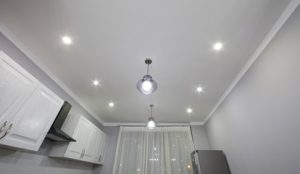Modesto House Painters offer more than just a paintbrush and bucket of paint. They take the time to thoroughly prepare surfaces and carefully cover belongings, leaving a room ready for use.

They know what colors work best on a home’s exterior and can transform its appearance. They also understand the importance of using high-quality materials to guarantee long-lasting results.
If you’re in the market for a House Painter, it’s important to take the time to research your options and find a professional who can meet your needs. You can use a variety of resources to assess a potential contractor’s work quality and professionalism, including community platforms and reviews. In addition, utilizing personal recommendations from friends or family members can provide valuable insight into a painter’s work ethic and reliability.
A reputable and experienced painter will have years of experience handling a variety of different painting techniques, ensuring a high-quality finish. They know how to prepare surfaces and apply paint evenly to achieve a uniform look. They also understand the unique challenges that can arise during a painting project, such as moisture damage or wall cracks, and can make adjustments accordingly.
Punctuality is a hallmark of professionalism, as it demonstrates an understanding that customers’ time is valuable. A reliable painter will arrive on time for appointments and adhere to agreed timelines throughout the project. In addition, they will keep you updated on their progress and inform you of any changes in the schedule.
Professional house painters always respect their clients’ properties and maintain a clean work environment. This includes laying down protective coverings and carefully sealing paint cans to prevent spills. They also ensure that all tools and equipment are in good condition and follow industry regulations. A painter’s attention to detail can transform a room into an elegant space that enhances the value of your home.
Hiring a qualified and experienced painter can save you a lot of time and stress, while delivering high-quality results. Choosing the right painter can be difficult, but you can minimize your risk by following these tips. To start, ask for referrals from friends and family and check their online reviews. You should also request quotes from several contractors and compare their prices. Be wary of low bids, as they may indicate shortcuts or inferior materials. In addition, you should also be sure that the painter is licensed and insured, which will protect you in case of accidents or damages.
Expertise
Professional house painters have the expertise necessary to transform homes with flawless finishes. Mastery of various painting techniques and an understanding of environmental concerns allows them to achieve high-quality results that exceed the skills of DIY enthusiasts. This extensive knowledge allows them to manage expectations and complete projects on schedule. It also means they are able to deliver the highest level of service, including addressing any issues that arise during a project.
Punctuality is an essential skill for house painters, as it ensures that projects are completed on time and that clients do not experience any disruptions. It also helps them communicate realistic project timelines to avoid misunderstandings and frustration. In addition, punctuality demonstrates that house painters take their work seriously and are dedicated to providing quality service.
Painters use their knowledge of the industry to provide clients with advice on the best products and materials for each job. They understand that the type of paint used is crucial, as it can impact the outcome and long-term costs. For example, higher-quality paints may cost more upfront, but they offer longer durability and require fewer touch-ups. In addition, they are aware that a variety of weather conditions can affect the drying time and final result of each painting project.
Moreover, a good painter is committed to the safety of his or her team and the surrounding environment. This includes taking steps to reduce the risk of hazardous substances being released into the air and water. For example, they may wear respirators to protect their lungs and skin from harmful chemicals. They also make sure to dispose of paint cans and other waste in accordance with environmental regulations.
In addition, they ensure that their staff follows strict health and safety guidelines to prevent any accidents or injuries on the job. They also promote a healthy balance between work and life by establishing a positive workplace culture and offering support resources for employees. This can help them maintain mental and physical health, and boost productivity and overall satisfaction. In addition, it can improve employee morale and increase loyalty to the company.
Experience
Adding a fresh coat of paint to your house is one of the simplest ways to upgrade its aesthetics and enhance its value. But, the task is time-consuming and requires specialized skills. This is where professional house painters come in, providing meticulous surface preparation and flawless application to achieve the desired results.
Moreover, their expertise in handling various materials and textures ensures the finished product is durable and long-lasting. Besides, their familiarity with different architectural styles and surface types enables them to address issues efficiently, making the whole process less stressful for homeowners.
A good House Painter will be able to provide you with credible recommendations and case studies from previous clients, demonstrating their level of performance, reliability, and professionalism. Ideally, they should be able to deliver high-quality work within stipulated timelines. It is also crucial that they possess a strong work ethic and are able to communicate effectively.
Local painting contractors have an advantage over others because they can offer a complete range of services, from exterior paint preparation to interior design. They are familiar with the structure of the home and its surroundings, allowing them to make timely repairs and adjustments before applying a new coating. They also have a greater understanding of the weather conditions in the area, which can affect the quality of the final finish.
Experienced house painters can help you choose the right colors to create a visually appealing and cohesive finish that reflects your personal style and enhances your property’s curb appeal. They will use their knowledge of color trends, color psychology, and other factors to select a color palette that will complement your existing furniture and decor. They can also suggest innovative finishing touches to give your space a unique and memorable look.
In addition to their years of experience, experienced house painters are capable of handling a wide variety of surfaces and textures, including plaster, stucco, drywall, textured surfaces, and brick. They can also handle different finishes, including oil and latex, spray paints, stains, and varnishes. They can also apply various types of wallpaper, ensuring a high-quality finish. In some cases, they may even be able to repair and resurface damaged areas.
Communication
The quality of communication between a painter and client is critical to ensuring an overall positive experience. A professional house painter takes the time to listen to a client’s needs, provide clear explanations of the painting process, and answer any questions or concerns. They also follow up with regular progress updates and communicate any unforeseen issues in an efficient manner.
Asking for referrals and visiting past projects is another way to assess a potential house painter’s work. A professional will be proud to showcase their portfolio and happy to discuss previous client experiences. This is a great way to gauge their level of professionalism, reliability, and quality of workmanship.
Trust your instincts and avoid house painters who employ pressure tactics or make promises that sound too good to be true. Such tactics are designed to take advantage of your fear of missing out and desire for a bargain. A reputable contractor will value transparency and be willing to give you a detailed breakdown of the project’s scope, materials, and expected costs.
It’s also important to look for a company with liability insurance and worker’s compensation. This ensures that in the event of an accident, you are protected from any financial liability. A reputable house painter will also be willing to provide you with references from previous clients and a copy of their license and insurance policy.
House painters who stay up-to-date on the latest developments in their industry are better equipped to meet their clients’ needs. This includes advanced coatings that resist stains, bumps, and dents. They may also use paints with low levels of volatile organic compounds (VOCs) to maintain healthy indoor air quality.
In addition, a good house painter should be willing to give you a written contract that clearly defines the project details, payment terms, start and completion dates, and any contingencies for unexpected circumstances. A painter who balks at giving you a written contract might have something to hide. This is a red flag that indicates they are not a legitimate house painter who values transparency and trust.


